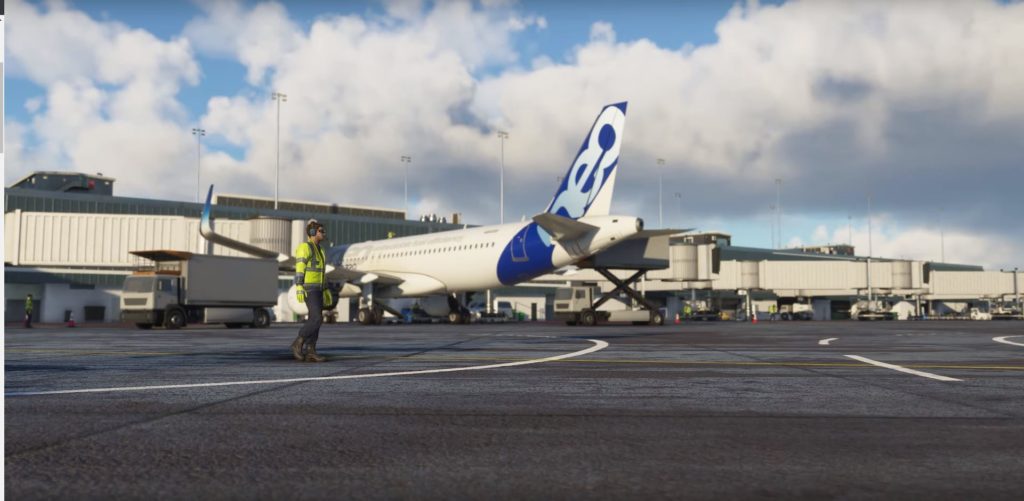The development team over at Asobo has been hard at work on putting together the next-generation entry of Microsoft’s long-running Flight Simulator series. With it being 14 years since the release of last title, FSX, there’s been quite the jump in technological capabilities. Asobo has used these more powerful toolsets to pull off an astounding feat that they’ve shown in their latest “Feature Discovery” series, which gives us a behind-the-scenes look at the development process of the new FS. In Episode 6 – Airports, Asobo has confirmed that the new Flight Simulator is going to contain every airport on planet Earth. According to various sources, there are over 40,000 registered airport codes across the globe.
Of course, this number includes small, regional airports that are sometimes just grass strips and a small space for parking. But, the fact that the devs have made sure to research every last one from the least to the greatest is quite the achievement. Arguably even more impressive is that the vast majority of the collection has been manually edited by Asobo’s designers—37,000 to be exact.
Building blocks
In the video, Flight Simulator Lead Game Designer, Sven Mestas, broke down the process that the developers have been going through in order to craft the airports. The team has been researching satellite data, and then with the assistance of algorithms, they’ve taken that data and stitched the layout and terrain of each airport. This even includes small details like parking spaces and taxiway markings. Even the width and length of each runway has been taken into consideration, along with the terrain type. Some runways are dirt, while others are grass or concrete; they will have a unique effect on the handling of aircraft.
The developers have also made sure to included animated windsocks and accurate taxiway markings in Flight Simulator. Ground lighting generation has also been improved, giving a more realistic 3D effect to both airports and the surrounding infrastructure.
Out of the 37,000 manually edited airports, the developers have specifically targetted 80 of them as deserving more attention to bring them much closer to reality. This selection was made due to them being considered the most played and busiest airports. There’s also a “top-level category” which consists of iconic airports scattered around the globe. The environments around these airports have also been accurately terraformed to push the needle of realism even further.
Fun on the ground
Asobo has not just stopped at dressing the airports up, however. They’ve also made sure that their behavior has also been given an upgrade. Being described as “ambient life”, you will see service vehicles like luggage carts, buses, trucks, tugs, and the like rolling around the aprons and taxiways. They will also hold short when crossing runways and coming in contact with taxing airplanes.
Flight Simulator players will also be able to request ground crew services in a more realistic way. These services have been given their own radio frequency, and allow for things like requesting a jetway, stair truck, fuel truck, luggage handling, catering, ground power unit, and pushback tug. All of these operations have been given extensively more animation work to bring them closer to reality, and will also now have actual sounds. Not only that, but animated human workers will also be seen walking about and driving the different service vehicles.
These features were available in FSX, however, it was to an extremely limited degree. Certain add-ons made it better, but this next-gen version is leaps and bounds more advanced. Not to mention it will be very beneficial to have it baked into the sim itself rather than being a separate utility.
Giving power to the people
Of course, the big question is: how will these ground services play with all the different add-ons? That was a limitation in FSX; many add-ons, particularly freeware ones, would often have strange effects when it came to interacting with any of the limited ground services. Either they somewhat worked, or didn’t function at all. Well, Asobo has confirmed that the new GS system in Flight Simulator is going to be editable via XML. The SDK can also be used for creators to make their own scripts and place the models wherever they want.
AI traffic is making a return here in the new Flight Simulator, and they will also make use of the new ground services system. Take-off, taxi and landing behavior will also all be there, just as was in the case in past entries.
Ultimately, it is clear that Asobo has done a lot of work to try and bring the real-world operations of airports into the virtual realm. Again, features like this have traditionally been available as payware add-ons, and would typically be limited to specific airports. But, now that even more advanced functionality is being included within the sim itself, and also being free to edit at that, is quite the step forward over past MSFS entries.
To see everything in action, check out the full “Airports” Feature Discovery video for Flight Simulator below:










Published: Feb 21, 2020 03:13 pm